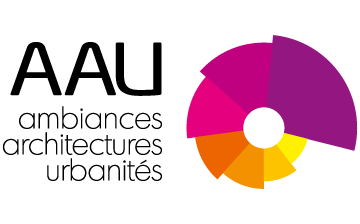Ambiances architecturales et comportements psychomoteurs. De l’observation à l’aide à la conception. Le cas de structures pédopsychiatriques
ARCHITECTURAL AMBIANCES AND PSYCHOMOTOR BEHAVIORS
From observation to aided design - The case of structures for children showing psychic disorders
Isabelle LEOTHAUD - Thèse de doctorat soutenue en 2006
Encadrement : J.F. Augoyard
FR
Ce travail qui s’inscrit dans la problématique de la théorie des ambiances se propose, à travers l’approche d’un espace dédié à la pathologie mentale, de s’attacher aux rôles des ambiances intérieures de structures spécialisées dans l’accueil d’enfants présentant des troubles psychiques. Sur trois hôpitaux, la méthode comprend de longues campagnes d’observations ethnographiques des enfants dans leur milieu d’accueil, des relevés architecturaux et des mesures d’ambiance ainsi que diverses discussions avec les professionnels touchant à notre sujet. L’analyse s’est attachée, premièrement, aux conduites spatiales, sociales et affectives de ces enfants par rapport à leur environnement, deuxièmement, à dégager l’émergence de certains facteurs ambiants et combinaisons de facteurs participant aux conduites usagères et à la formation des ambiances situées. Les résultats intéressent donc, d’un point de vue architectural, une aide à la programmation et à la conception d’espaces pédopsychiatriques à partir de critères pertinents, comme par exemple, la lisibilité des espaces, la solidité de l’enveloppe spatiale, l’aménagement de transitions à différentes échelles du projet. Une autre retombée est l’aide à la communication entre la maîtrise d’ouvrage, les professionnels de la santé mentale et la maîtrise d’oeuvre. Plus largement, sur l’hypothèse d’une relation non antithétique entre normal et pathologique, cette recherche participe à l’affinement de nos connaissances sur la relation sensori-motrice que tout sujet entretient avec son environnement et sur la perception qu’il a d’un espace par la convocation et la combinaison de différentes modalités sensibles.
EN
This work, which belongs to the field of the ambiance theory, aims at studying through a mental pathology the roles of ambiances within interior architectures dedicated to children with psychicdisorders. First ethnographic observations of children in their reception environment, architectural and metrological statements, and various discussions with practionners allow us to better understand their spatial, social, and emotional behaviors with respect to their environment (spatial, physical, social, or sensitive). Second, we bring to the fore some environmental factors and combinations of factors which take part in common behaviors and in creating localized ambiances.
From an architectural point of view, this work proposes some hints to help programming and designing something from relevant criteria, such as the readability of spaces, the robustness of the space envelope and furniture, the adjustment of transitions at different project scales, or the interior and external building settlement (furniture, matters, materials, and so on.) Moreover, this work will ease communication between the project clients—mental health clinicians—and the design team.
Larger, on relation no antithetic between normal and pathological hypothesis, this research increases our knowledge about the relationship between the subject and its environment, whatever spatial, physical, sensitive, or social. Furthermore it allows to better understand the perception an individual has of space through summoning and combining various significant factors. Consequently a finer approach of environments will be possible.
